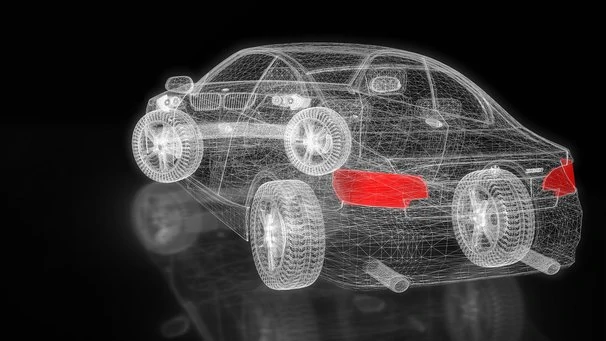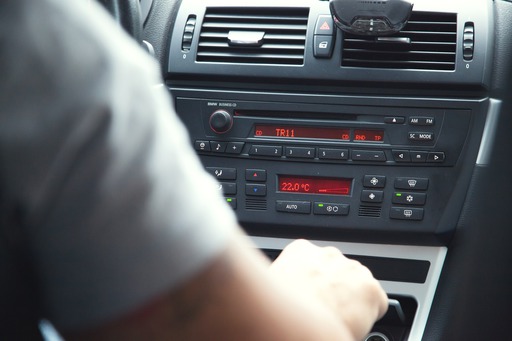Torque and overall performance may be significantly improved using performance chips. When it comes to getting the most out of your chip, though, several factors must be taken into consideration.
How efficiently a chip works depends on several variables, including the vehicle’s make and model, the quality of the gasoline and lubricant, and whether or not aftermarket performance items are present.
It’s crucial to know how these factors affect the efficiency of a GTE stage 1 performance chip before you decide whether or not to install one in your car.
What Does A Stage 1 Performance Chip Do?
Between the engine and the car’s computer lies a performance chip. Among other things, the computer includes the oxygen sensor, the intake valves, the throttle and ignition systems, and anything else that may be influenced by electromagnetic interference.
A stage 1 performance chip is a device that is designed to improve the performance of your car. It does this by modifying the way your car’s engine operates.
It works by altering the signals that are sent to your car’s engine. This allows your engine to operate more efficiently, which in turn improves the performance of your car.
The objective of the performance chip is to use electrical devices instead of mechanical processes to improve the vehicle’s performance. As a result, these chips fool the automobile into believing that its engine is far stronger than it is. Through faster throttle responsiveness and perhaps greater fuel efficiency, as well as somewhat increased torque and horsepower, they may enhance the perceived performance percentage.
Some tuners are more focused on a single objective, such as restoring a certain sound. Many modern V8 and V6 engines include cylinder deactivation features that the Range Active Fuel Management Disable Device disables, allowing all cylinders to remain active at all times and enhancing throttle response and power. Just as the name says, the Hypertech Speedometer Calibrator corrects your speedometer following gear changes and tire size adjustments.
Does The GTE Stage 1 Performance Chip Work?
Yes, the GTE Stage 1 Performance Chip does work. It is a great way to improve the performance of your vehicle and make it more responsive. The chip installation is very easy and takes only a few minutes. Once installed, you will immediately notice an increase in power and acceleration. You will also experience improved fuel economy and reduced emissions. The GTE Performance Chip is backed by a 60-day money-back satisfaction guarantee, so you can be sure that you are getting a quality product.
Can I Install A Stage 1 Performance Chip Myself?
Yes, you can install a stage 1 performance chip yourself. However, it is important to note that you will need to have some knowledge of car mechanics to do so.
If you are not comfortable installing the chip yourself, you may want to take your car to a mechanic who can install it for you.
However, if you are comfortable installing the chip yourself, you can follow the instructions that come with the chip.
It is also important to note that not all stage 1 performance chips are created equal. So, it is important to do your research before you purchase a chip.
Is A Stage 1 Performance Chip Legal?
The legal status of stage 1 performance chips varies from country to country. In some cases, they may be considered legal, while in others they may not be. It is important to check the laws in your area before installing a chip.
Do Performance Chips Really Work?
Performance chips, like any other performance component, are only as good as the car they’re installed in and their manufacturer. When it comes to the quality-price ratio, this is true. If you’re looking for a low-cost solution, you may want to steer clear of internet services. A wheeler’s power supply is amplified with chips purchased from reliable suppliers (which typically cost between $200 and $500).
The use of a performance chip may not be appropriate for all models. Pre-2010 models of Jeep Cherokee/Grand Cherokee, Subaru Forester, Mitsubishi Eclipse are examples of these vehicles.
The increase in horsepower will be minimal at best. Emissions might be a problem if the modules don’t fit well with these four-wheelers.
Adding a turbocharger or supercharger may improve the performance of certain aftermarket performance chips. Fuel-injected vehicles benefit greatly from an upgraded chip when it comes to fuel efficiency and performance.
Performance chips that fix a vehicle’s factory-installed richness may also have rehabilitative effects. However, there are certain drawbacks, such as the necessity to use higher-octane gasoline to get the best performance.
Choosing a fuel doesn’t mean the end of the story, of course. Using high-quality oil, installing an alternative air filter, and changing standard plugs and wires with high-quality ones are all important to get the most out of this computer enhancement.
Premium engine oil, in particular, extends the life of engines and improves fuel economy and power output by a small but significant margin.
Gas mileage, throttle response, torque/horsepower, and other factors will increase as a result of making these additional modifications in addition to installing a performance chip in your car.
How Much Horsepower Does A Stage 2 Performance Chip Add?
There is no definitive answer to this question since the amount of horsepower that a stage 2 performance chip adds depends on the make and model of your car. However, most stage 2 chips will add up to 25 horsepower to your car.
Advantages Of Using Performance Chips
Improve Fuel Economy
Fuel economy and MPG may be improved using “driving coach” chips, which remap the ECU/original ECM’s values, resulting in operating efficiency. Your car’s control unit or module is guided by this function, making it more fuel-efficient even if you don’t have your foot on the gas pedal.
As a consequence, you get the greatest mileage per gallon and save money over time, particularly if you travel large distances often.
Improve Acceleration and Speed
Think of a performance chip as a regular control module that has been given a dose of nitrous oxide. With an aftermarket chip, you can get twice as much performance out of your engine as you would with your car’s factory-installed module.
The chip adjusts the engine to enhance valve lift if you want to boost acceleration and top-end speed at high rpm. This may also be reduced for purposes such as hauling or towing.
Air-Fuel Ratio Controlled
It’s common knowledge that performance chips can only do so much to open up your car’s air intake. Even though this is true, chips are still used to fine-tune the air-fuel ratio in your engine. As a consequence, your cylinders pull in more energy, resulting in more powerful and regulated combustion. And what’s the finest part? Power output may be increased without having to alter the factory-set air-fuel ratio.
Regulate And Observe Engine Performance
Performance chips, despite their reputation for boosting horsepower and reducing fuel consumption, also serve as a preventative measure against engine damage. Yes, the engine’s internal systems have warning lights built-in to let the driver know if something is amiss. Chips, on the other hand, take action to reduce a negative effect as soon as it is detected, in contrast to these signs.
Engine overheating may cause performance chips to quickly drop a vehicle’s horsepower, for example. That’s not all; it also gives useful information for troubleshooting or repair (if necessary) thereafter. When it comes to maintaining tabs on the core causes of engine issues, many car owners find this quite useful.


